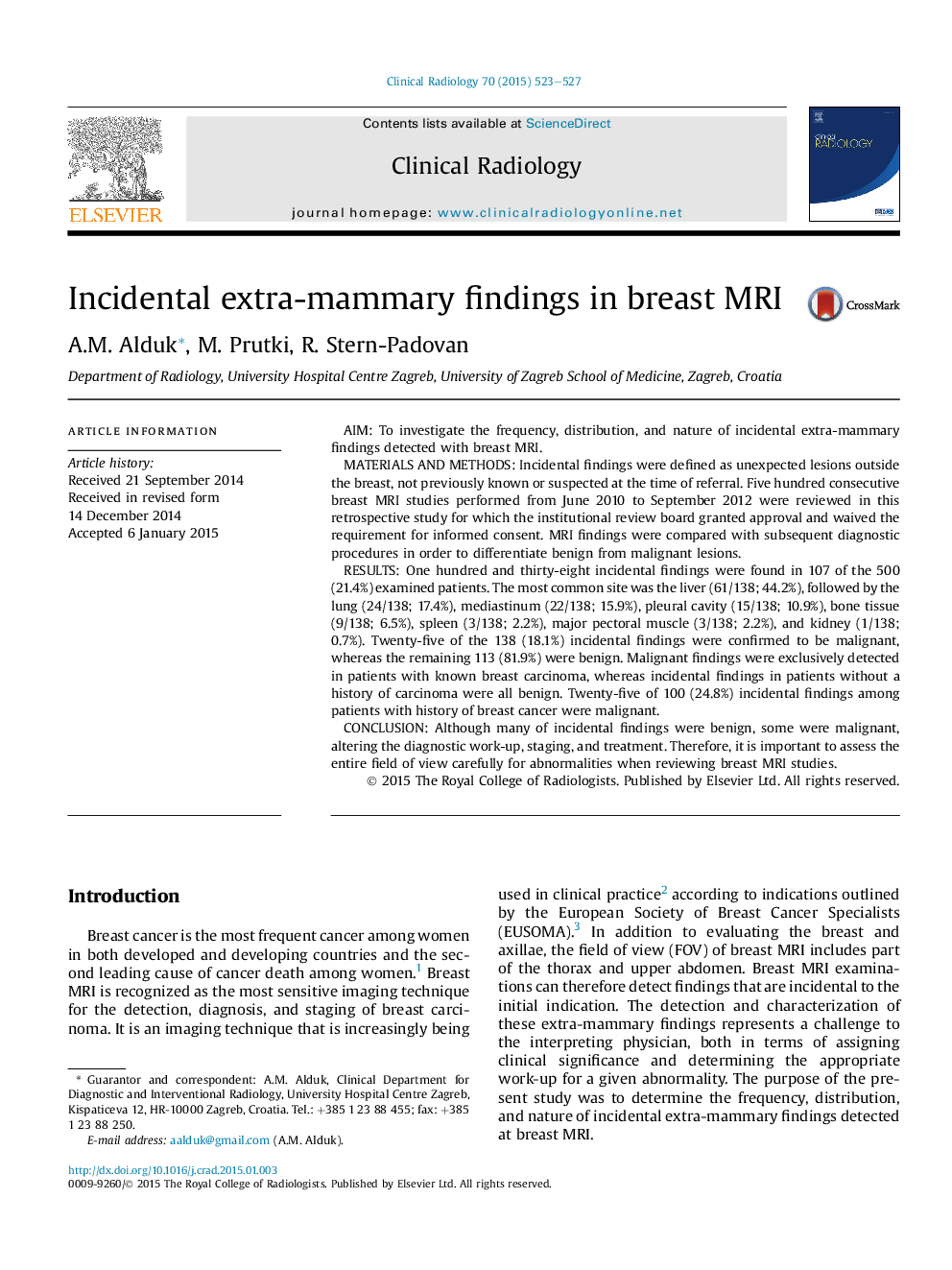| Article ID | Journal | Published Year | Pages | File Type |
|---|---|---|---|---|
| 6190951 | Clinical Radiology | 2015 | 5 Pages |
â¢500 consecutive breast MRI studies were retrospectively reviewed.â¢Incidental findings were found in 107/500 (21.4%) of examined patients.â¢Incidental extra-mammary findings on breast MRI are common.â¢Malignant findings were exclusively detected in patients with known breast carcinoma.â¢There is a high likelihood of bone incidental findings being malignant.
AimTo investigate the frequency, distribution, and nature of incidental extra-mammary findings detected with breast MRI.Materials and methodsIncidental findings were defined as unexpected lesions outside the breast, not previously known or suspected at the time of referral. Five hundred consecutive breast MRI studies performed from June 2010 to September 2012 were reviewed in this retrospective study for which the institutional review board granted approval and waived the requirement for informed consent. MRI findings were compared with subsequent diagnostic procedures in order to differentiate benign from malignant lesions.ResultsOne hundred and thirty-eight incidental findings were found in 107 of the 500 (21.4%) examined patients. The most common site was the liver (61/138; 44.2%), followed by the lung (24/138; 17.4%), mediastinum (22/138; 15.9%), pleural cavity (15/138; 10.9%), bone tissue (9/138; 6.5%), spleen (3/138; 2.2%), major pectoral muscle (3/138; 2.2%), and kidney (1/138; 0.7%). Twenty-five of the 138 (18.1%) incidental findings were confirmed to be malignant, whereas the remaining 113 (81.9%) were benign. Malignant findings were exclusively detected in patients with known breast carcinoma, whereas incidental findings in patients without a history of carcinoma were all benign. Twenty-five of 100 (24.8%) incidental findings among patients with history of breast cancer were malignant.ConclusionAlthough many of incidental findings were benign, some were malignant, altering the diagnostic work-up, staging, and treatment. Therefore, it is important to assess the entire field of view carefully for abnormalities when reviewing breast MRI studies.
